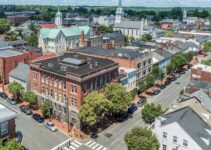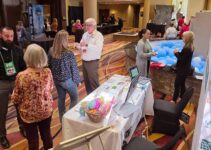Whether it’s optimal star-gazing, ensuring wellness of their citizens, or protecting wildlife and natural resources, minimizing light pollution and maximizing dark sky preservation is an increasingly high priority topic for municipalities across the country.
View sample light pollution legislation >
A movement to preserve dark skies
The “dark sky preservation” concept emerged in the 1950s, when Flagstaff, Arizona, (home of the Lowell Observatory) became the first municipality to recognize the impact of light pollution on its night sky and act to protect the darkness. In 1958, the city pioneered dark sky preservation with the first lighting ordinance designed to preserve the night for the sake of astonomy. Flagstaff has gone on to become the world’s first city to receive an International Dark Sky City designation in recognition of “its conservation efforts and appreciation for a rare natural resource in the age of urban expansion.”
Since that time, an increasing awareness of light pollution and its harmful effects on a variety of fronts has caused more cities worldwide to consider how to mitigate it.
What harm is there?
While the dark sky movement began with professional and amateur astronomers sharing their distress about skyglow from urban areas significantly reducing the ability to see and study stars, a number of other significant issues resulting from light pollution have proven cause for concern.
Too much exposure to artificial light can cause disrupted sleep. Some research suggests that exposure to certain wavelengths of light at night can suppress our bodies’ ability to produce melatonin, a hormone that plays a role in the sleep/wake cycle. And long-term disrupted sleep can result in hypertension, dyslipidemia, cardiovascular disease, weight-related issues, metabolic syndrome, type 2 diabetes mellitus, and colorectal cancer.
Artificial lighting at night also appears to affect animals and ecosystems in all sorts of unexpected ways. From sea turtles to migrating birds and even fireflies, light emanating from buildings at night can cause navigational problems for wildlife, impacting their very survival. Researchers have recently discovered that nocturnal insects are easily distracted from their pollination duties by the lure of bright lights, reducing visits of nocturnal pollinators to flowers by up to 62%. The impact of this is a significant reduction in fruit production.
There is even some evidence that harmful algae in lakes, which lowers the quality of drinking water, is not being removed at the same rate. Normal algae grazing of zooplankton is compromised by artificial light that abnormally influences their depth distribution. And while nighttime lighting can be very useful in some circumstances, it can also be a major waste of energy – and money. Many streetlights continue to shine even in hours and locations when no one actually needs them. By some estimates, 40 percent of a city’s electric bill goes toward street lighting — and about half of that is simply wasted. That would imply that the U.S. squanders about $3.5 billion on excessive lighting each year.
Let there not be so much light
As concerns rise about light pollution and its ancillary detrimental effects on nature, human health, and wildlife wellness, cities like Buda, Texas, are taking measures to develop more sustainable policies. In Buda, the city has worked to meet the requirements of the International Dark Sky Association to become a Dark Sky Certified Community. Additionally, it has adopted, as part of the city’s Unified Development Code, Outdoor Lighting Standards to reduce light pollution.
Dimming the lights where you are
A number of client communities of General Code and our family of companies have been certified as Dark Sky Communities, including:
- Blanco, Texas
- Buda, Texas
- Flagstaff, Arizona
- Fountain Hills, Arizona
- Helper City, Utah
- Homer Glen, Illinois
- Horseshoe Bay, Texas
- Sedona, Arizona
If your municipality is interested in being designated as a Dark Sky Community, you can learn more on the International Dark-Sky Association website.
Useful examples of light pollution legislation from the eCode360® Library
If your community is simply interested in reducing the harmful impacts of light pollution by legislating or updating ordinances related to lighting standards, here are some useful examples that can be found in our eCode360 Library:
Looking for something else? Search the eCode360 library for the topics and terms you’re specifically looking for.
Updating your municipal code is vitally important
Submit your code updates as soon as possible and ensure constituents and local government officials are always referencing and working with the most up-to-date resources. Make it part of your Board meeting close-out process to send your adopted legislative changes to General Code when everything from that meeting is already right at hand.
General Code clients can easily send legislation to [email protected] (If you’re located in Texas, please submit your legislation to [email protected]) For tips that will allow us to process your code updates most efficiently, click here.
Questions about updating your code?
Our Client Care team is available to explain the options and benefits of scheduled code updates or any other code-related questions you might have.
Sources:
- Lowell Observatory
- Wikipedia: Dark-Sky Movement
- Dark Sky Over Flagstaff
- Wikipedia: Skyglow
- The night sky is vanishing: 80 percent of Americans can no longer see the Milky Way
- Limiting the impact of light pollution on human health, environment and stellar visibility
- Is melatonin a helpful sleep aid
- Short- and long-term health consequences of sleep disruption
- Pollination threatened by artificial light
- Urban light pollution alters the diel vertical migration of Daphnia
- How LEDs Are Going To Change The Way We Look At Cities
- Light Pollution Hurts Our Economy and Our Resources
- Buda Dark Skies & Lighting
- International Dark Sky Reserves
- Why Dark Skies Need to be Preserved
- Flagstaff: World’s First International Dark Sky City
- eCode360 Library






